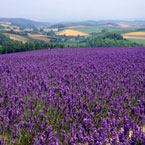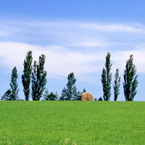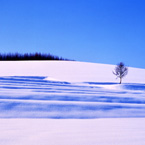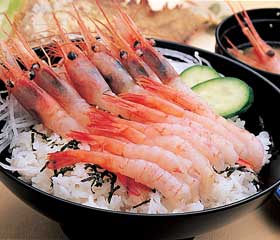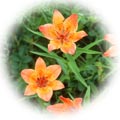|
|
|||||||
|
|
|||||||
|
|||||||
| | Web Japan >> | Trends in Japan >> | J-food >> | Hokkaido, Cornucopia Of Fine Foods | |
|
HOKKAIDO, CORNUCOPIA OF FINE FOODS Japan's Northern Island Is a Natural Treasure Trove (August 7, 2007) Sea-urchin-gathering tours were launched this year on the Shiretoko Peninsula, and in no time at all they have become popular with visitors. Foragers walk along the shore of this northeastern part of Hokkaido, designated a World Heritage site for its natural beauty, searching among the rocks for uni, as sea urchins are called in Japanese. On finding some, they cut them open, dig out the roe with a spoon, and eat them on the spot. "I've never had uni so rich and sweet," one participant enthused. Unidon, or raw sea urchin on a bowl of warm rice, is a delicious specialty enjoyed throughout Hokkaido. The uni and other seafood products of Shiretoko have captivated the tourists who visit this area of natural wonders.
Culinary Delights from Land and Sea Hokkaido is the northernmost of Japan's main islands. It takes about an hour and a half to get there by plane from Tokyo's Haneda Airport. With an area of 83,500 square kilometers - about the size of Austria - Hokkaido accounts for about 20% of Japan's land area and is the country's second largest island after Honshu.
Situated midway between the temperate zone and the subarctic, Hokkaido's climate is considerably colder than the more southern regions of Japan. In the depth of winter, sometimes the early morning temperature in inland regions drops below minus-30 degrees Celsius. With this severe climate, Hokkaido was not opened to full-fledged development until the Meiji era (1868-1912), when Japan embarked on modernization. In the century or so since, human effort and advances in production technology have transformed much of the island's territory into agricultural land. The annual value of Hokkaido's agricultural output exceeds ¥1 trillion ($8.3 billion at ¥120 to the dollar) and accounts for more than 10% of Japan's total agricultural production. Hokkaido leads the nation in output volume in many farm-product categories, including milk, wheat, onions, and soybeans. The smell of freshly harvested vegetables wafts from the fields, coming from asparagus plants growing tall in the spring, corn ripening under the summer sun, and potatoes and other crops in the autumn. Meanwhile, the oceans surrounding Hokkaido are among Japan's most prolific fishery grounds. Warm and cold currents intersect in a complex pattern in the offshore waters, creating an environment where scallops, salmon, tuna, squid, and other fish and shellfish thrive. The salmon caught in the Pacific in early summer have just the right amount of fat. Hokkaido can also be justly proud of other fresh seafood delicacies, such as horsehair crabs from the Sea of Okhotsk and botan shrimp from the Sea of Japan. Two popular ways of consuming the fish and shellfish caught off Hokkaido are to eat them raw as sashimi or boil them with vegetables in a nabe (hotpot) and then dip them in ponzu (a mixture of soy sauce and citrus fruit juices). Botan shrimp, for example, can be dipped in soy sauce and eaten raw, placed on a bowl of rice to make ebidon, or even added to miso soup to give this Japanese staple a delicate, sweet twist.
Lake Toya, Venue of the G8 Summit Lake Toya is a caldera lake formed by volcanic activity in ancient times. With a circumference of 43 kilometers and four islands in it, the lake sets a very pretty scene. As the hot spring resort of Toyako Onsen can be reached by car from Sapporo in about two hours, some 700,000 visitors come to lodge in its inns each year. Among the sites to see are Mount Usu - an active volcano that still occasionally erupts - and the 58 pieces of sculpture on display at the Gurutto Sculpture Park. The summit meeting is to take place in the Windsor Hotel Toya, which looks down on the lake from the top of a hill. The hotel has a three-star French restaurant and a famous Kyoto restaurant serving Japanese-style food. These and the other restaurants offer original dishes prepared from seasonal Hokkaido food products. Carefully selected local ingredients are crafted into works of art at the hands of master chefs.
One of the signature dishes of the Michel Bras TOYA Japon restaurant, for example, is Gargouillou, a warm salad featuring about a dozen vegetables, including turnip and lotus root. Each of the vegetables is cooked in a different pan with water of a different temperature and salt level. Once cooked, the vegetables are sprinkled with an olive oil dressing and eaten with prosciutto ham and a special spice mix. This attention to detail maximizes the delicious taste of each of the fresh local ingredients - a characteristic that the restaurant's cuisine shares with Hokkaido's traditional dishes. Copyright (c) 2007 Web Japan. Edited by Japan Echo Inc. based on domestic Japanese news sources. Articles presented here are offered for reference purposes and do not necessarily represent the policy or views of the Japanese Government. |
SAPPORO, HOKKAIDO�S CULINARY HUB (August 30, 2007) |
|||||||||||||||||||||||||||||||||||||||||
|
||||||||||||||||||||||||||||||||||||||||||

